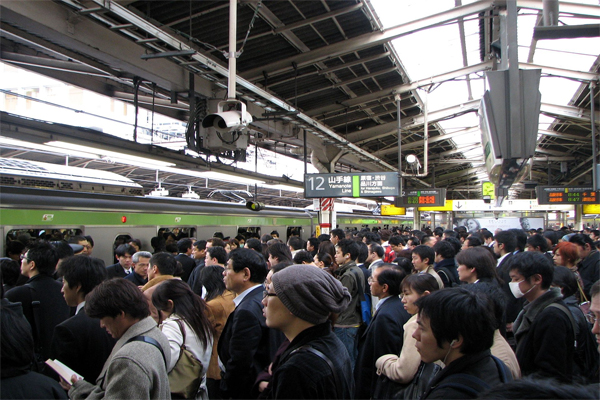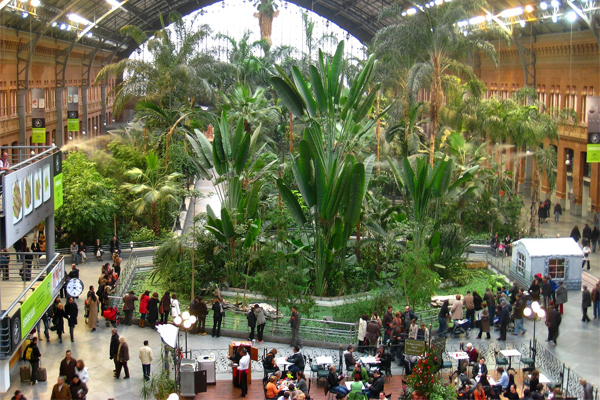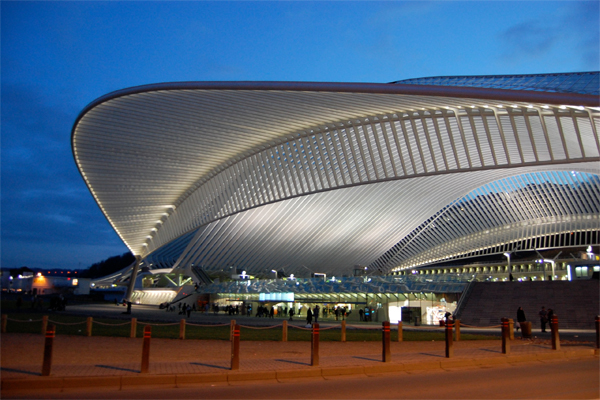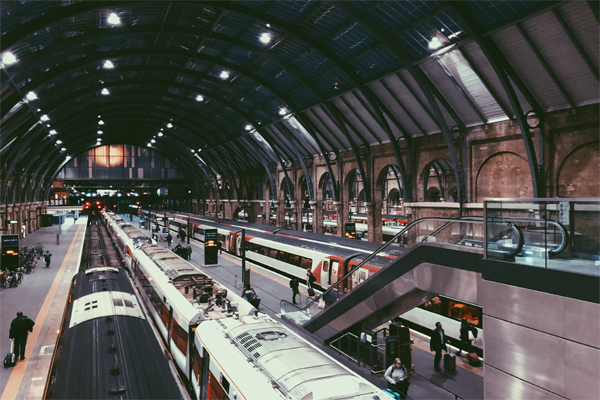For the transport industry, such as rail, inclusion is vital for a more resilient, dynamic and inclusive future, notes Daisy Chapman-Chamberlain, Rail Knowledge Transfer Manager at Knowledge Transfer Network. In this week’s guest column, she outlines why “inclusion and belonging” should not be overlooked for future success.
Inclusion within rail has long been a key issue. How do we make the industry more inclusive for all our passengers, a great career option for a wider range of people, and the best possible travel option for journeys of all types? Today, this is more relevant than ever as we face changes none of us could have foreseen. It is vital that we keep inclusion on the agenda to support rail staff, as well as stakeholders and passengers – with health and safety as a key priority.
When considering the long-term Covid-19 impact, it’s important to look at the UK’s National Risk Register. Rail invests in cyber security measures, which carry a similar probability and impact in risk terms – so why do we not also invest in other risks, such as pandemics? Long-term resilience is the key here, which benefits and safeguards the rail industry, staff roles and passengers needs alike, as well as boosting economic recovery.
LONG-TERM RESILIENCE
For long-term resilience, especially in the context of Covid-19, inclusion cannot be overlooked. Many social distancing measures within rail have a disproportionate impact on people protected under the Equality Act, such as the disabled, older and pregnant passengers. Longer times spent standing in queuing systems, communicating essential messages through posters, rather than a range of communication methods and blocking out seating can all impact passengers in safe and easy use of rail.
The current perspective of rail as unsafe, especially for the vulnerable, also disproportionally affects these groups and can cause social isolation, limited access to employment and life opportunities, and more. Rail needs to both visually appear to be, and actually be inclusive and open for all – now more than ever – and there are many changes needed to achieve this.
However, inclusion goes beyond this; it overlaps social inclusion, equality and equal access, ensuring rail meets the needs of all our passengers and communities. By improving the rail environment (and rail processes) we can generate long-term benefits for all passengers – socially and in terms of mental and physical health and wellbeing.
COMMUNITY & WELLBEING SUPPORT
We must care more about our communities and wellbeing at this time than we do about economic priorities and for rail (as well as all other industries) to thrive. We must take this into account and look at how our behaviour, as well as passenger behaviour, should and could adapt.
With this in mind, what can we do to make transport systems healthier? How will this global situation change our travel habits? Increasing flexitime use was already giving rise to the potential for reduced ‘rush hour crush’, which can only lead to healthier, less confined travel practices. With the rise in home working, could this expedite the flexitime effect and give us healthier and more inclusive travel and living patterns?

Alongside this, accessibility in a health and mobility sense comes to the fore; making our systems physically easier to use, as well as reducing stress and anxiety through the built environment, staff, information, use of green spaces, connections to active travel, community stations work and more, which all have ongoing effects in boosting overall community health, both physically and mentally.
INNOVATION FOR LONG-TERM NEEDS
Looking to the future, it’s vital we consider health and wellbeing as an intersectional need intrinsically linked to accessibility and sustainability, especially with an ageing population and growing numbers of rail users; which Covid-19 is unlikely to impact in the long term. In particular, the Health team at Knowledge Transfer Network is well-placed to address innovation around these longer-term needs.
When we consider sanitisation and cleanliness in rail environments, better cleaning processes as well as antiviral surfaces help the most vulnerable, but benefit us all. Similarly, more automatic and accessible doors and entrances would reduce transmission of viruses and bacteria but would also make spaces more accessible to passengers with reduced mobility, as well as passengers with pushchairs and luggage.
Passenger information being provided in several forms (written, visual, auditory, both in the environment and digitally) and being clearer and more accessible makes rail easier to use for those with communication needs, anxiety, hearing loss and more, and actually benefits all passengers “ease of use”. Cybersecurity and related needs around this are a clear need for consideration, with the Defence and Security team at Knowledge Transfer Network a key industry contact. Less crowding and more coordinated (potentially digital) queuing will help those for whom crowded spaces are alarming, or who have sensory processing needs; but find me the passenger for whom a less crushed commute isn’t an incentive! These alterations, which must be made, make rail better and safer for all.
AN ENVIRONMENTALLY-FOCUSED JOURNEY
We must also consider rail staff at the beginning of this inclusion journey; ensuring that not only is rail accessible for those working within it, but considering how changes (including more flexible working and working from home) can make some rail roles an employment option for a wider range of talented people for whom office working and a commute is difficult. Existing rail staff are vital in making this a success; rail is only as successful as its people, and the cultural journey must be led by them.
One of the greatest cultural changes we now face is the need to shift to a more environmentally focused and green way of thinking and operating; which is intrinsically tried to our Covid-19 recovery and future. In the built environment, green open spaces, with wide walking routes and concourses enable social distancing, but also enrich public health in terms of emissions and air quality. Green spaces improve health and wellbeing for society as a whole as well as benefitting some of the most vulnerable, including those with respiratory conditions. Creative new designs and innovations around the green agenda, as well as many of the inclusion innovation opportunities above in related technology, would also provide a much-needed economic boost, aiding our national and global pandemic recovery.

Making stations better environments benefits us all, but especially marginalised groups; around 73% of workers in the poorest fifth of earners in the UK would struggle to work from home and often have no choice but to use public transport. When considering inclusion of homeless people, and many vulnerable groups, toilets and water fountains in railway stations are key facilities. We must therefore ensure these spaces are not only safe, but consider how rail can do more to support all groups in our communities; that our spaces are welcoming, inclusive and well-designed. The Built Environment requirement for cross-industry collaboration to enable the most effective possible collaborations is well-addressed by the Infrastructure team at Knowledge Transfer Network.

COLLABORATION IS KEY
Inclusion is not optional – it’s essential in keeping passengers and staff alike safe and in rebuilding rail, therefore must be included in the ‘new normal’ from the beginning. We must ensure that a diverse range of people are creating and scrutinising policy (including across technology and infrastructure) to avoid data gaps and biases and ensure true inclusion. Collaboration is key in a crisis, and so this unified approach will ensure a stronger future rail industry, faster economic recovery and growth, as well as provide environmental benefits.
Through all these steps and best practice, we can restore public confidence in rail – with the actions and changes required to back it up – not just through marketing, but creating a more resilient industry now and into the future. Now is the time to change – to invest in these principles, making our networks safer, easier to use and better spaces to be in.
The world has changed forever and our rail networks can become a shining example of what can be achieved for everyone in our society when inclusion is considered first; a more resilient, dynamic and inclusive railway with greater levels of wellbeing, health, economic recovery and of opportunity for all.
Knowledge Transfer Network works to make these innovations, as well as innovations across all industries possible, connecting people with solutions to industry leaders facing challenges. For more information, contact daisy.chamberlain@ktn-uk.org
AUTHOR BIOGRAPHY

Daisy Chapman-Chamberlain is Rail Knowledge Transfer Manager at Knowledge Transfer Network and has a passion for transport transformation, accessibility and sustainability. She also focuses strongly on Accessible & Inclusive Mobility (AIM), supporting and driving business innovation in AIM across transport modes, and working to enable full inclusion across transport. Her previous role was Equality, Diversity and Inclusion Lead for Community Rail Lancashire, where she developed and led several award-winning projects focussed on women and girls in rail, inclusion of LGBT+ communities and those with additional needs and disabilities, which have led to significant programme development within the transport industry nationally. She is also a board member for the Association of Community Rail Partnerships and a Northern Power Woman.







































